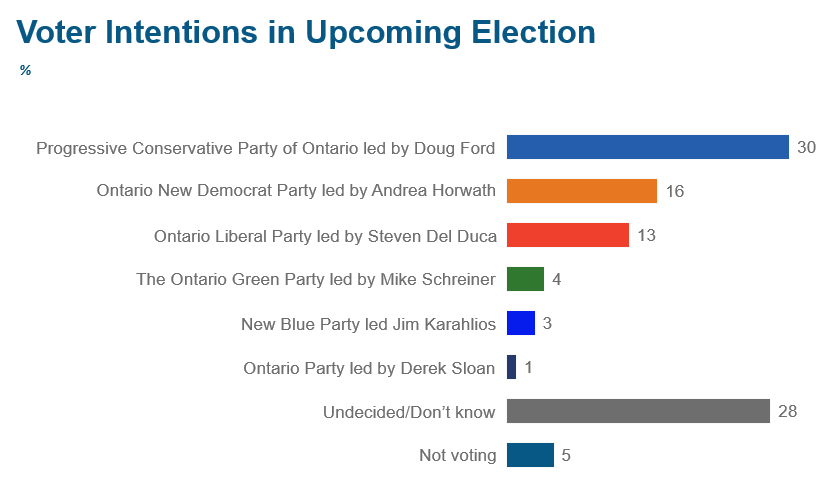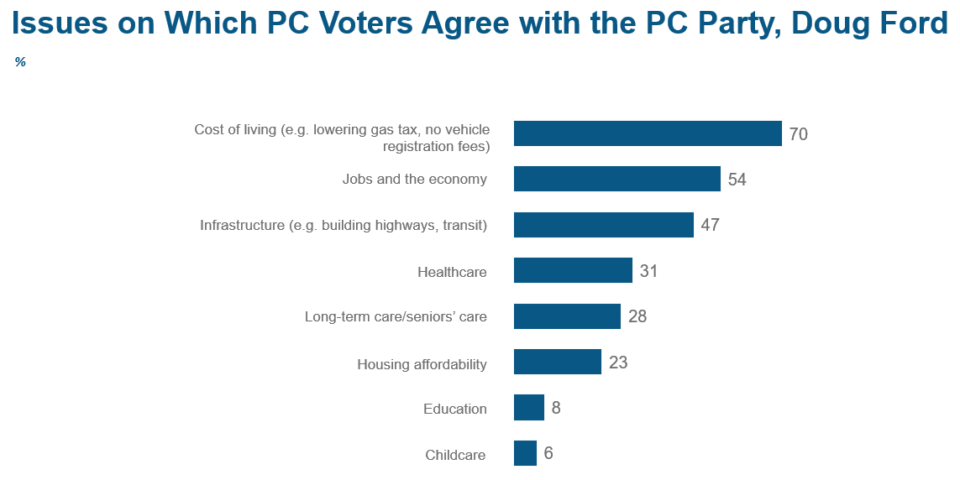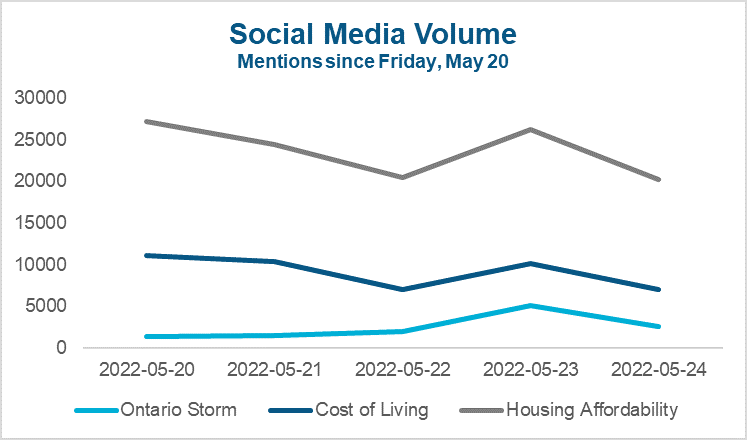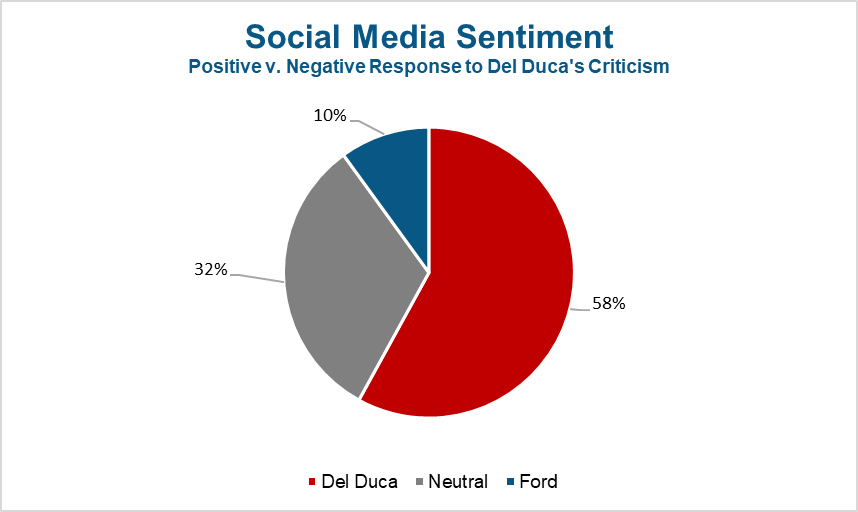With a week left on the campaign trail, opposition war rooms are scrambling to land a match-winning partisan punch on the leading PCs.
In this edition, we look at whether there are enough swing voters to change the course of this campaign and reflect on why the opposition parties have not been able to gain the traction they need to defeat Doug Ford. To catch up on past editions, visit the Push Back.
What We’re Watching
- While we still see a strong lead for the PCs, the race for second remains up for grabs. Polling shows 10 ridings are still a toss-up for next week.
- Ford felt confident enough to hold a rally on Horwath’s home turf in Hamilton Thursday night. Ford has more rallies planned each night over the coming days in Kitchener, London, Ajax and Toronto.
- Audrey Festeryga, the Liberal candidate for Chatham—Kent—Leamington, withdrew her candidacy on Thursday amid claims from the NDP that she had reused the signatures of constituents who signed in support of ousted Alex Mazurek. That’s now three ridings without a Liberal candidate.
- Liberal Leader Del Duca came under fire for $50,000 in hospitality charges racked up by his riding association while he was in government.
- In an attempt to deliver a partisan blow, the Liberal War Room sent a chicken mascot to call out the PCs for their debate-dodging candidates.
- In a last ditch effort, NDP Leader Andrea Horwath is pushing out a positive 30-second clip from a recent rally depicting herself as the only leader that will fix what matters most.
Research Insights
If you think this election period has been slow, you aren’t alone, and our research insights tell the same story. Three weeks ago, we published our first edition of the Push Back. Since then, our research shows that 63 per cent of undecided Ontarians have not changed their vote intentions in the past three weeks.
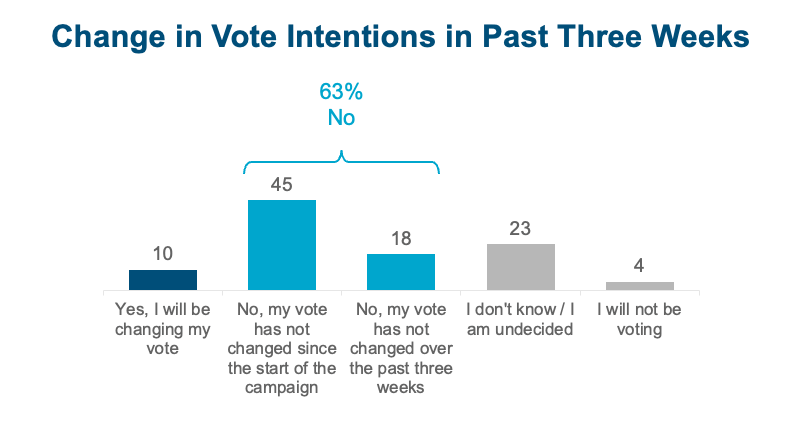 Among decided voters, only 13 per cent of people said their intention had changed since the start of election period.
Among decided voters, only 13 per cent of people said their intention had changed since the start of election period.
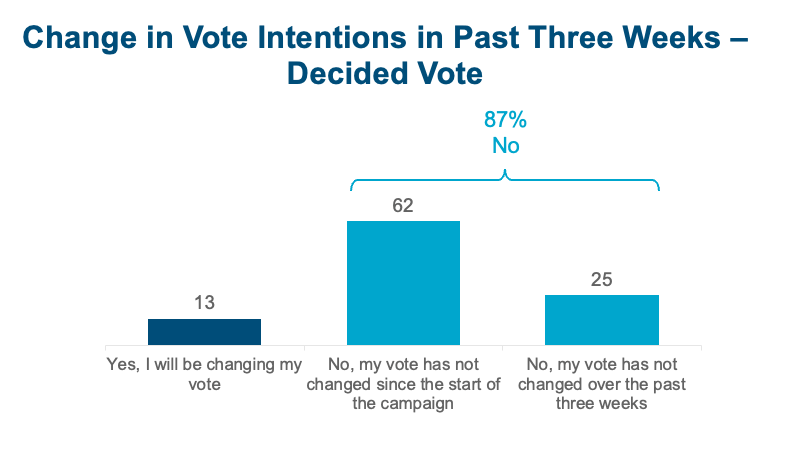
While this is clearly not a change election, let’s not forget the 23 per cent of respondents who remain undecided as well as the 10 per cent of respondents that can be still be classified as swing voters. We believe campaigns matter, but nothing on the campaign trail appears to be moving votes on a drastic scale – a trend that typically favours incumbents.
Social Media Analysis
After two years of COVID-19 and similar to last year’s federal election, most voters have tuned out this election. As the sitting premier who successfully weathered the pandemic, reopened the economy and ended mask mandates, this was Ford’s election to lose. While most Ontarians had some inkling of who Andrea Horwath was after 14 years as NDP Leader, Liberal Leader Steven Del Duca started this election as a relatively unknown quantity. So, was he able to build his profile and win over voters?
The graph below shows social media mentions of the three major party leaders. Throughout the campaign period, Doug Ford has held a commanding lead in name recognition as evidenced by mentions on social media. More surprisingly, Liberal Leader Steven Del Duca appears to have been unable to break through on social and introduce himself to voters – with a steady number of social media mentions throughout the entire campaign period.
Since April 28, there have been 392,000 mentions of Doug Ford, compared to just 135,000 mentions of Steven Del Duca and a statistically similar 131,000 mentions of Andrea Horwath.
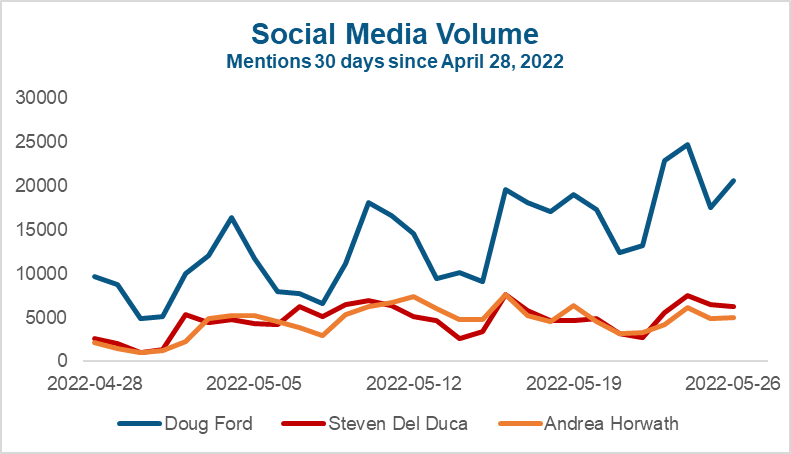
Wedge Issues
In a previous edition of the Push Back, we looked at how the Liberal and NDP campaigns attempted to drive several wedge issues in the election. While there are other issues on which the opposition continues to push back on the Conservative’s reputation, our analysis shows that they’ve ultimately been unsuccessful in using these issues to bring voters to their side.
Wedge 1: Affordability
As previous Navigator polling has demonstrated, the top election issue for Ontarians is affordability and the cost of living. Throughout the campaign, we have seen all three parties introduce policies to address this top issue. Andrea Horwath and the NDP promised an ambitious platform of rental control and to boost affordable housing, Steven Del Duca’s Liberal Party promised voters $1 transit rides and PC Leader Doug Ford doubled down on his promise to cut the gas tax. So how did these policies play with Ontario voters?
While the Liberal “buck-a-ride” platform got significant traction on social media in the days immediately after being announced on May 2, coverage stabilized in the following weeks. Since April 28, there have been 13,000 mentions of the NDP housing commitments, 11,000 mentions of the PC gas tax cut, and just 8,600 mentions of the Liberals’ buck-a-ride promise.
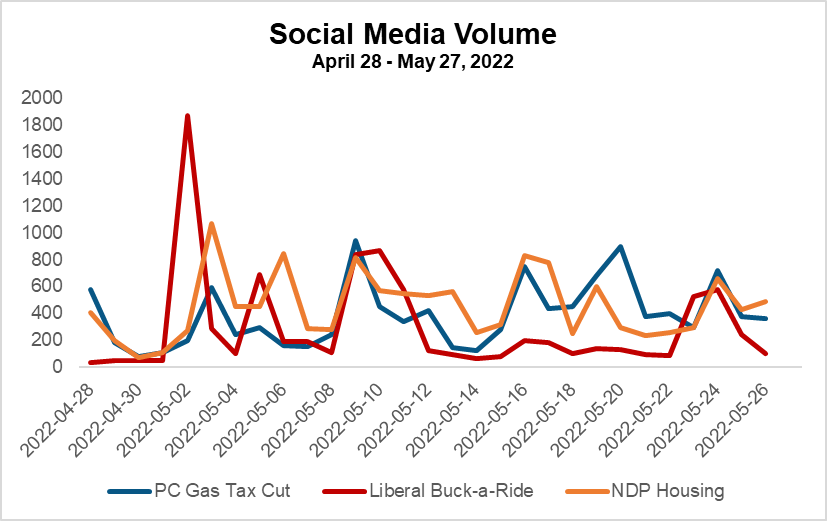
Wedge 2: Education
On May 5, the Liberals pledged to cap class sizes at 20 students per class for every grade in the province if elected. In response to the announcement, Premier Ford pushed back on the plan stating that, under the previous Liberal government, it closed 600 schools. Here is how the plan played out on social media throughout the course of the election so far.
The volume on social media peaked with 103 mentions on May 5, the day of the announcement. The plan immediately lost traction across social media in the days following the announcement, with only a few instances of increased mentions later in the month.
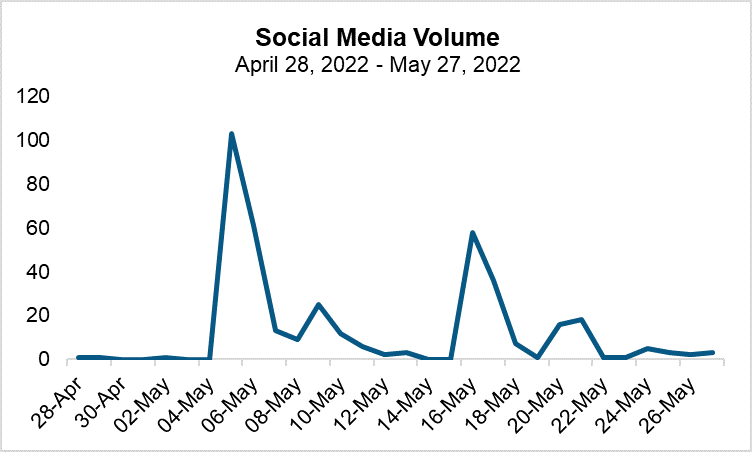
Wedge 3: Long-Term Care
The opposition has been critical of the PCs and the current long-term care system, notably of the treatment of seniors during the pandemic. On May 26, both the NDP and Liberals pledged to end for-profit long-term care. Since the start of the election, NDP leader Andrea Horwath promised to overhaul the long-term care system and claimed the PCs would only continue privatizing the health-care system.
The NDP has had several spikes in volume on social media with mentions of the issue of long-term care. However, the total volume of mentions remained low throughout the month. The volume peaked with 155 mentions on May 26 when the NDP announced a plan to end for-profit long-term care.
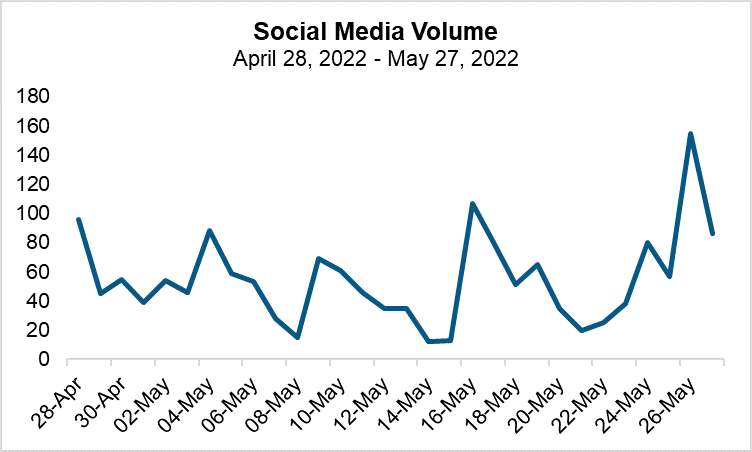
Push Back Verdict – Deflated Balloon
Overall, the oppositions’ attempt to push back on the PCs and create wedges on traditionally weak areas for the PCs’ track record over the course of the campaign failed to gain any traction. The Liberals had a lot of initial momentum with their buck-a-ride policy at the outset of the campaign, but seemed to lose air over the last few weeks. The opposition has not made a compelling case for change on these important policy files, which means Ontarians may not be ready to accept change and would rather stick to the status quo. Both the Liberals and the NDP will need to pull out all the creative stops to be able to slow the PCs’ momentum heading into next Thursday.
Have any questions about the news out of Queen’s Park this week? Please reach out to our political experts at info@navltd.com.
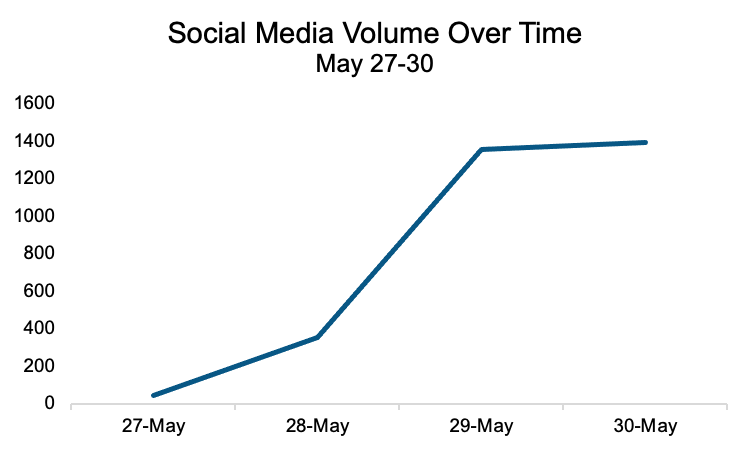

 Among decided voters, only 13 per cent of people said their intention had changed since the start of election period.
Among decided voters, only 13 per cent of people said their intention had changed since the start of election period.




